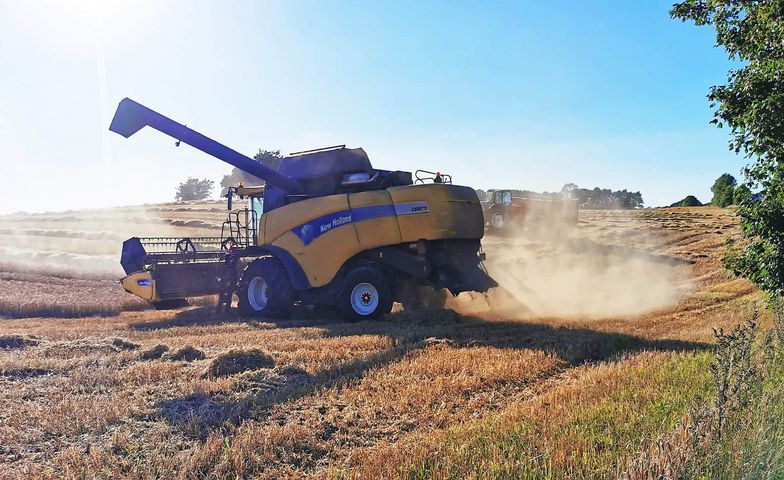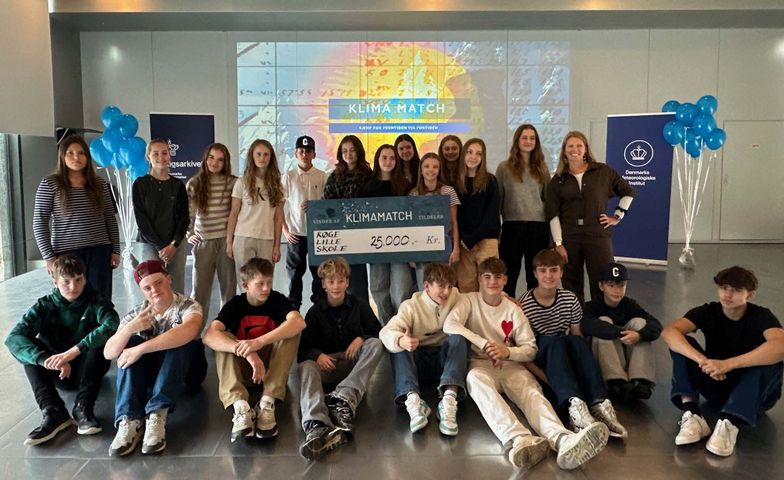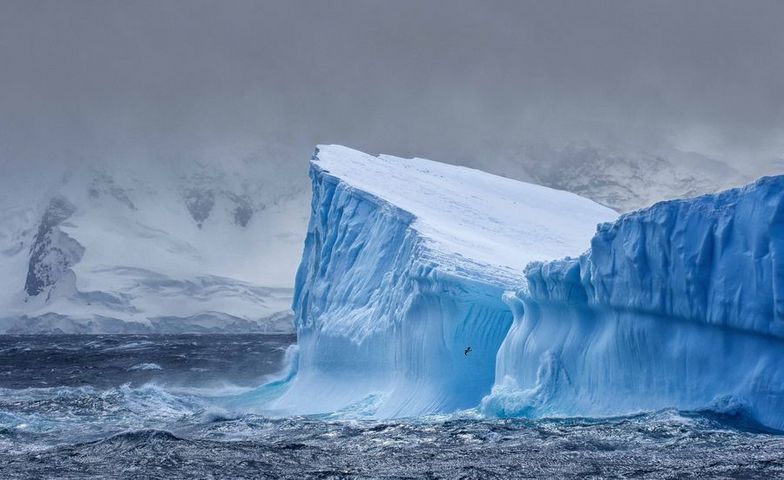Forecast Data EDR API
Our forecast data EDR API is an API created to make it easier to get specific parts of forecast data. The underlying data is exactly the same as the Forecast Data STAC-API (except that HARMONIE ML forecasts are not included). However with this API, it is possible to get smaller parts of forecast data without having to get whole forecast files.
Click here for Swagger - Interactive API explorer (external site)
To execute calls the service input your api-key by clicking the "Authorize" button in Swagger
Quick start examples
Example Response
{
"type": "FeatureCollection",
"features": [
{
"type": "Feature",
"geometry": {
"type": "Point",
"coordinates": [
12.55015598605009,
55.70856572594708
]
},
"properties": {
"temperature-2m": 280.9348,
"wind-speed-10m": 6.067077938048905,
"wind-speed": 6.0671906,
"step": "2023-10-26T06:00:00.000Z",
"wind-dir-10m": 64.22486331026232
}
}
]
}
API
/collections
Example: https://dmigw.govcloud.dk/v1/forecastedr/collections
Description: Will return all available collections in the API.
The Weather Model (HARMONIE) can be found in the collections:
- /v1/forecastdata/collections/harmonie_dini_sf
- /v1/forecastdata/collections/harmonie_dini_pl
- /v1/forecastdata/collections/harmonie_dini_eps_means
- /v1/forecastdata/collections/harmonie_dini_eps_percentiles
- /v1/forecastdata/collections/harmonie_dini_eps_probabilities
- /v1/forecastdata/collections/harmonie_ig_sf
- /v1/forecastdata/collections/harmonie_ig_pl
for the North Eastern Area (Denmark and surrounding area) in the collections starting with harmonie_dini and Greenland in the collections starting with harmonie_ig.
The Wave Model (WAM) can be found in the collections:
- /v1/forecastedr/collections/wam_dw
- /v1/forecastedr/collections/wam_nsb
- /v1/forecastedr/collections/wam_natlant
for area Danish Waters, North Atlantic and North Sea-Baltic, respectively.
The Storm Surge Model (DKSS) can be found in the collections:
- /v1/forecastedr/collections/dkss_nsbs
- /v1/forecastedr/collections/dkss_idw
- /v1/forecastedr/collections/dkss_ws
- /v1/forecastedr/collections/dkss_lf
- /v1/forecastedr/collections/dkss_lb
- /v1/forecastedr/collections/dkss_if
for the area North Sea Baltic Sea, Inner Danish Waters, Wadden Sea, Roskilde/Isefjord, Limfjord and Little Belt, respectively.
/collections/<collection id>/instance/<instance id>
WARNING: Deprecated, will be removed in the future
Please use /collections/<collection id>/instances/<instance id> instead
/collections/<collection id>/instances/<instance id>
Where <collection Id> can be one of the collections listed above and <instance Id> is the id of the modelrun
This the applies to both the /collections/<collectionId>/<query> and /collections/<collectionId>/instance/<instanceId>/<query> endpoints
where <query> can either by cube or position.
Path parameters
/collections/<collection name>/<query>
Where <query> can either by cube or position.
This the applies to both the /collections/<collection name>/<query> and /collections/<collection name>/instances/<instanceId>/<query> endpoints.
Query parameters
/collections/<collection name>/grib
This is an experimental endpoint that returns data for a list of parameters in GRIB (external site) format. It is not possible to filter by area - the entire model area is always returned.
Return format is GRIB v1 or GRIB v2 depending on which collection is queried - Harmonie is GRIB v2, other collections are GRIB v1.
The model data returned is the same as can be downloaded (but not filtered) in the forecast data STAC-API but allows for smaller download sizes due to parameter filtering.
Query parameters
No other query selection parameters are supported, the entire GRIB message is returned.
There is also a /collections/<collection name>/instances/<instanceId>/grib endpoint for querying a specific model run.
Examples:
Return complete forecast for the parameter temperature-2m
Request: https://dmigw.govcloud.dk/v1/forecastedr/collections/harmonie_dini_sf/grib?parameter-name=temperature-2m (external site)
Return 3 hours of forecast for the parameters temperature-2m and temperature-50m
Request: https://dmigw.govcloud.dk/v1/forecastedr/collections/harmonie_dini_sf/grib?parameter-name=temperature-2m,temperature-50m&datetime=2024-08-23T18:00:00Z/2024-08-23T20:00:00Z (external site)
/collections/<collection name>/bbox
This is an experimental endpoint that works the same as the …/cube endpoint but is less strict in what it can return. The EDR (external site) specification limits what can be returned when the data returned it not in the queried CRS. For models that are not natively CRS84 (DINI and IG) this limits the amount of data that can be returned.
This endpoint allows querying with CRS84 and get data in a grid that is not aligned with CRS84. This is useful for NetCDF formats where the projection information is encoded into the returned data.
To avoid doing the projection two special “parameter-names” have been introduced: latitude and longitude, which specify the CRS84 latitude and longitude for each point returned. These do not change, so please query only for these once with one timestep and cache the reponse to save response time and bandwidth.
There is also a /collections/<collection name>/instances/<instanceId>/bbox endpoint for querying a specific model run.
Examples:
Return complete forecast for the parameter temperature-2m, for the CRS84 bounding box with southwesterly point (10, 51) and northeasterly point (20, 60)
- Request: https://dmigw.govcloud.dk/v1/forecastedr/collections/harmonie_dini_sf/bbox?bbox=10,51,20,60¶meter-name=temperature-2m&crs=crs84&f=NetCDF (external site)
Return a single forecast step for temperature-2m with the latitude and longitude “parameters”. Please cache latitude and longitude and reuse those for queries that use the same bbox. Note that some values are null because they are outside the given bbox.
- Request: https://dmigw.govcloud.dk/v1/forecastedr/collections/harmonie_dini_sf/bbox?bbox=9,55,10,56¶meter-name=temperature-2m,latitude,longitude&crs=crs84&f=CoverageJSON&datetime=2024-09-16T09:00:00.000Z (external site)
Response schema
Overall Structure
The API is a OGC EDR API - Features service and follows this standard as documented here: https://ogcapi.ogc.org/edr/ (external site).
The service response is CoverageJSON (the default), GeoJSON or NetCDF and can be specified using the f parameter. Each format has its advantages; CoverageJSON is much more compact than GeoJSON for large amounts of data whereas GeoJSON is a simpler format with many supporting tools. NetCDF is the most compact but is a binary format.
The standard for CoverageJSON is maintained here: https://github.com/opengeospatial/CoverageJSON (external site) and GeoJSON is documented in https://www.rfc-editor.org/rfc/rfc7946 (external site). These references should be used to understand the format in general and below are important points relevant to this service only.
https://covjson.org/ (external site) also includes links to other CoverageJSON related resources.
CoverageJSON
CoverageJSONs efficient grid format describes data as a n-dimentional grid. This service currently always returns a 3 dimentional grid with axes for time (t) and a 2d-space (x,y) for all queries. For /position queries there is only 1 x and 1 y value.
The harmonie_dini and harmonie ig have a lambert coordinate system and when returning data with CRS=native, we are currently not able to return the CRS for the x and y coordinates, because we cannot encode the lambert/rotated grid CRS parameters in a format required by CoverageJSON. Therefore the x and y axis are missing from the references section:
"referencing" : [ {
"coordinates" : [ "t" ],
"system" : {
"type" : "TemporalRS",
"calendar" : "Gregorian"
}
} ]
The x and y coordinates have to be interpreted as being in a lambert grid - see CRS. When returning data with CRS=crs84 and for models already in CRS84, x and y axis are referenced correctly:
"referencing": [
{
"coordinates": [
"t"
],
"system": {
"type": "TemporalRS",
"calendar": "Gregorian"
}
},
{
"coordinates": [
"x",
"y"
],
"system": {
"type": "GeographicCRS",
"id": "http://www.opengis.net/def/crs/OGC/1.3/CRS84"
}
}
]
Currently the z-axis is "encoded" within the parameter-name. For example, if a temperature is requested for a specific height, it will be returned through different parameter-names; example: temperature-0m, temperature-2m, temperature-50m, etc. It is expected that when support for the z-parameter is implemented this can be requested with parameter-name=temperature and z=0m,2m,50m and a z-axis will appear (making it a 4 dimentional grid).
The CoverageJSON "ranges" section holds the data returned. See data types and format in the /v1/forecastedr/collections/<collectionId> endpoint or here, here or here (depending on model). Special care should be taken with the wind u/v values as they may have to be rotated before use (see CRS).
GeoJSON
The GeoJSON format returns a GeoJSON feature collection with a GeoJSON feature for each point and step time. The step time is in a property called "step" and is a RFC3339 (external site) encoded timestamp for which forecast step this GeoJSON object is for. The data returned is in the GeoJSON properties values with parameter-name as key. Because GeoJSON objects do not have any grid like structure, all data can returned in a different CRS and therefore also be converted (rotated).
The CRS is not encoded inside the GeoJSON feature collection.
NetCDF
The NetCDF format is described here (external site). It has much in common with the CoverageJSON format (so same limitations apply) in that is describes arrays of data, but is a binary format. It has support for describing the projections of the returned data so tooling should be able to correctly display the returned data - we have tested this with QGIS (external site).
Instances
The EDR service has a concept of 'Instance', which is described in https://docs.ogc.org/is/19-086r5/19-086r5.html#toc26 (external site). 'Instance' is in this service used to point to a specific forecast execution run. At DMI each forecast is executed periodically and sent to this service and a number of these forecasts are available for queries. If the instance is not part of the query (like https://dmigw.govcloud.dk/v1/forecastedr/collections/harmonie_dini_sf/position?... (external site)) the newest forecast model run is used and if instance is part of the query (like https://dmigw.govcloud.dk/v1/forecastedr/collections/harmonie_dini_sf/instances/2025-08-19T000000Z/position?... (external site)) then that specific forecast model run is used. If the forecast model run is not available a HTTP client error 404 is returned.
CRS
The WAM and DKSS models are stored in CRS84 coordinates and it is therefore easy to receive, query and return CRS84 coordinates for those models. The HARMONIE DINI and HARMONIE IG use a lambert CRS (as described here) which means that they are best queried with the native CRS. It is not easy to use CRS84 with these models as coordinates have to be converted between CRS84 and native coordinates, and with CoverageJSON it is not possible to return gridded data in CRS84 format, as coordinates are no longer located in a regular grid when converted to CRS84. For GeoJSON output this is not a problem as there is no grid structure in GeoJSON, however, the payload size in GeoJSON is much larger than CoverageJSON - often more than 10 times larger.
So therefore, when querying HARMONIE-DINI and HARMONIE-IG with cube/bbox type, queries can only be done with native CRS. When doing so, convert input coordinates into native grid coordinates and when receiving result convert the native grid coordinates into the required format.
A special case is the /position query, which can be done for HARMONIE DINI and IG using CRS84 with CoverageJSON - since there is only one point in the grid returned.
The /collection/ and /collection/<collectionname> endpoints give information on the CRS and WKT for each model so it is known what CRS the model is in.
An experimental endpoint /bbox has been introduced to allow querying with CRS84 and filter data with CRS84 coordinates even if the underlying model is not CRS84. Also note the NetCDF format which has support for returning the projections parameters and the special longitude/latitude parameters which returns the CRS84 coordinates for clients that are not able to do this projection.
Wind-parameters
For the HARMONIE DINI/IG models the wind parameters in the models are in a u and a v component in the models and these u/v components are combined to give a wind direction and speed. However, since the CRS of HARMONIE DINI/IG is lambert, this means that these u/v vectors have to be projected. The service supports this conversion when requesting with CRS84 as the CRS. If requested that way, the u/v vectors are combined and returned as wind speed and wind direction.
When querying for the u/v parameters directly (wind-10m-u or wind-10m-v for example) with crs=CRS84, note that the returned values are not corrected with respect to CRS - they are still in native values.
This also means that the combined wind-speed and wind-direction parameters are not available when requesting with native crs - the conversion can be done after receiving the response by getting each layer and doing the lambert projection on the wind vectors.
Parameters
Each model has a long list of available parameters, and for now not all are defined with names and description as they should be. We have therefore started with the most commonly used parameters and included those in the parameter-names lists and documentation. Until we have all parameters properly documented, you can still get all parameters available in the model by using the technical parameter-name. Please see the parameter pages DKSS Parameters (Forecast Data EDR API), WAM Parameters (Forecast Data EDR API) and HARMONIE Parameters (Forecast Data EDR API) for a list of all parameters for all models with their technical parameter-name and descriptions.
For example the 2nd parameter in the HARMONIE_DINI_SF parameter table is a parameter with technical parameter-name 0-6-3-0.0-103. This means that this parameter-name can be retrieved by using parameter-name=0-6-3-0.0-103 in the request. This is a workaround and may be removed, when we get all parameters properly documented in the parameter lists.
Feedback and suggestions for the parameter lists are very welcome.





